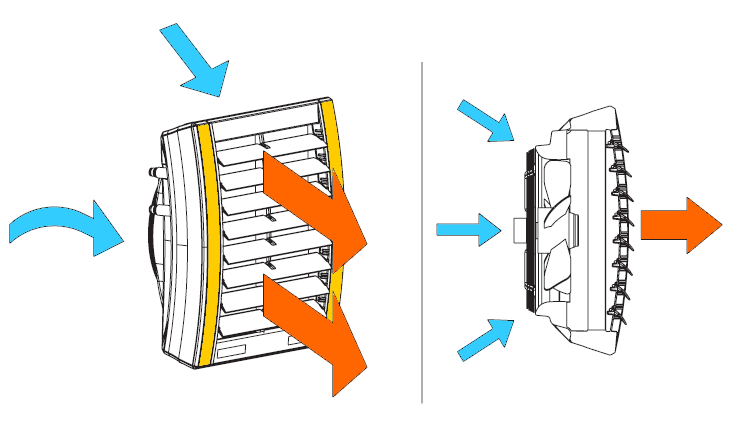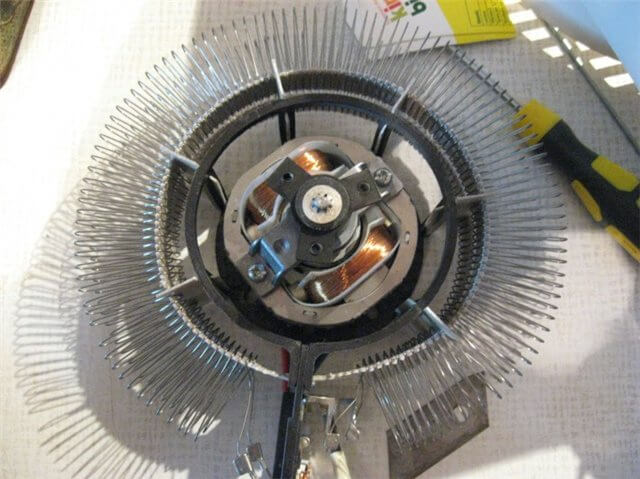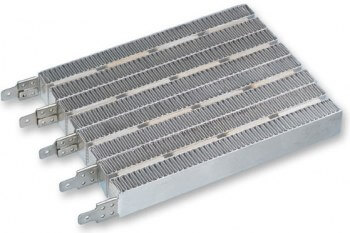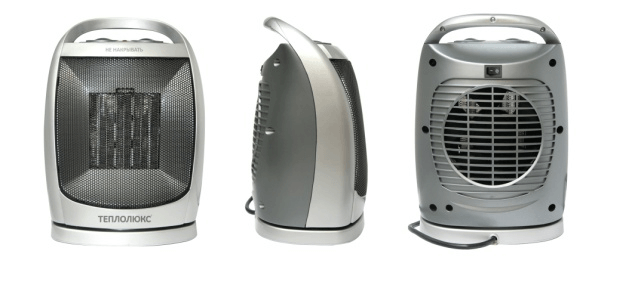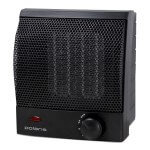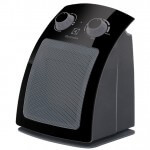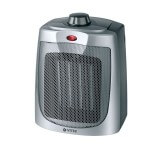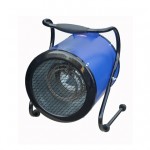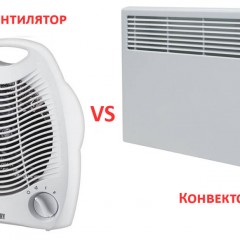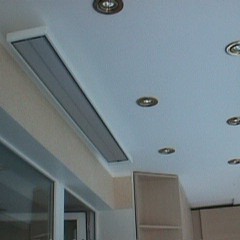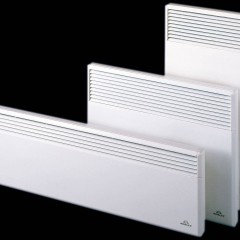Overview of electric fan heaters for the home
Principle of operation
The principle of operation of the electric heater is quite simple. When the fan is working, the blades create a stream of air, which, passing through the heating element, exits from the back side and spreads in the exposed direction.
In the picture you can clearly see this process:
Main classification
A variety of household electric fan heaters is small. The main differences can be in power, design features, type of heating element and functionality. We proceed to consider all the existing differences.
By power
Any group of electrical appliances necessarily has differences in power parameters, whether Appliances, a power tool or even a heater. In our case, products can have a power of 0.4 kW to 5 kW. The maximum characteristic is conditional, because There is no clear distinction between fans and heat guns. But still 5 kW is already considered a cannon. For the house, it is customary to use units with a capacity of up to 2.5 kW, which is quite enough for local room heating.
By type of heating element
There are household electric fan heaters with a spiral, a heating element and a ceramic heating element. The first option is cheaper, and therefore less reliable. Air heating is carried out by passing a stream through a spiral heated to several hundred degrees. As a result, not only fine dust is burned, but also oxygen. The result is the likelihood of a headache and an unpleasant odor in the room. Another important drawback is the fire hazard of the device. If the case accidentally capsizes, overheating of the spiral and further ignition of objects near it is possible.
The second option is a small upgrade to the spiral heater. The advantage of the design of the heating element is an extended service life and high fire safety.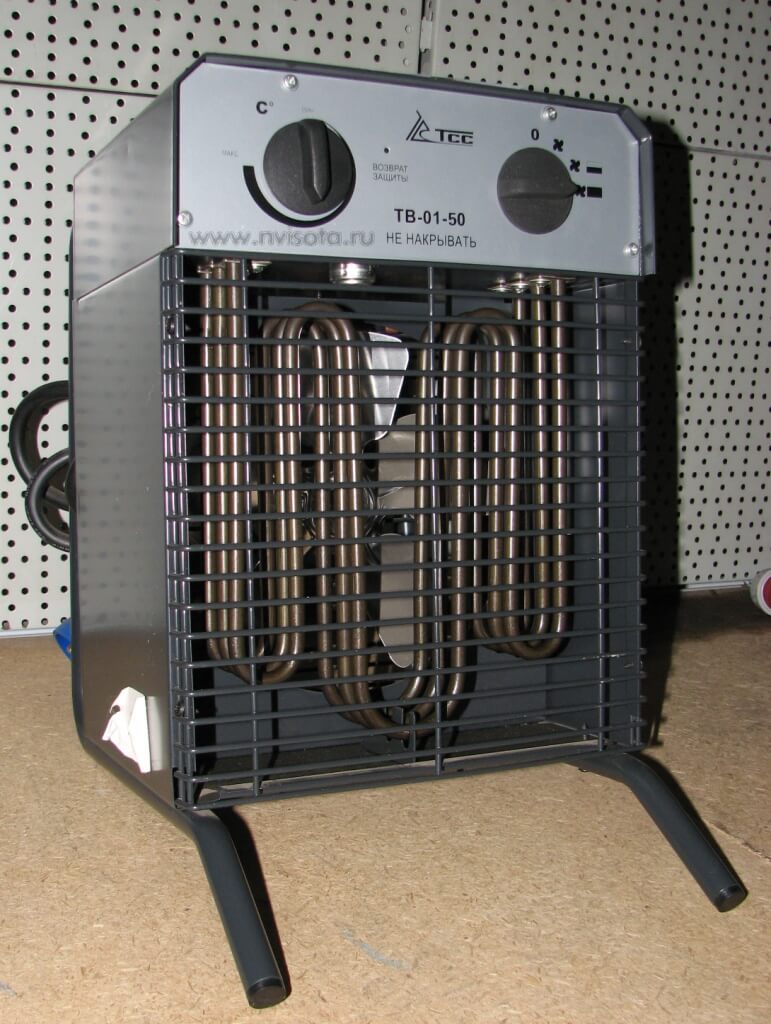
The third option has a lot of advantages, and, accordingly, a higher cost. In this case, heating is carried out using ceramic plates, the temperature of which is much lower. As a result, neither air nor dust burns, which makes staying in the room comfortable. It should also be noted that ceramic fan heaters are almost silent, have a longer service life and also will not cause a fire.
By way of fastening
To date, wall, floor and desktop (they are also called portable) devices are distinguished.
Wall-mounted household heaters that are powered by a network are similar to air conditioners, as their shape is the same horizontal. The main advantage is that the heater does not get underfoot and at the same time can complement the interior of the rooms. Mounting is carried out on the brackets included in the kit.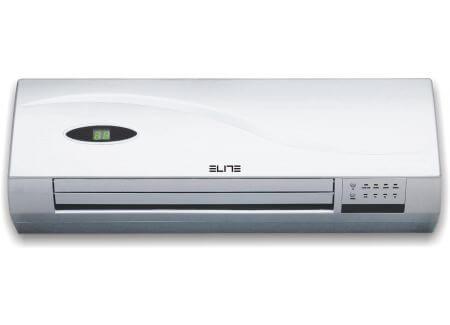
The floor-standing household fan heater has high power, but takes up free space, which is a minus in a small room. Most often, the heater is installed on a swivel base (as in the photo below), legs or wheels. The latter method is more convenient for moving around the room.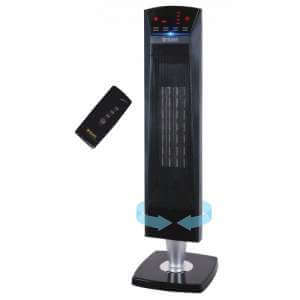
Desktop electric heaters have established themselves as convenient, cheap and very mobile products. Of course, they have less power, but at the same time, their compact dimensions allow them to be transported with them or stored on a shelf.
For additional features
Among the auxiliary functions that may differ electric household fan heaters, it should be noted:
- the presence of a sensor to automatically turn off the power when capsizing or overheating (responsible for the fire safety of the product);
- the presence of an on / off timer (a very convenient feature that allows you to reduce power consumption);
- the ability to control using a remote control (relevant for wall and floor units);
- the presence of an LCD display on the case (as a rule, it is present on modern models that have an electronic type thermostat);
- household electric fan heater with a temperature controller (this device allows you to set the optimum temperature in the rooms, which affects both comfort and energy saving);
- the ability to set the operating mode, it should be clarified a bit, because in some models, the fan can only blow warm air (through the heating element), and maybe cold (with the heater turned off).
We recommend watching a video on how to choose a household electric fan heater for the home:
Cost
Depending on all the above characteristics, the cost of household electric fan heaters can vary from 600 up to 12,000, although there are prices such as 46,000. In the latter case, it is rather a 30 kW heat gun, from the well-known manufacturer Master Climate Solutions. For domestic needs, we recommend buying heaters with a capacity of 2-3 kW. Their cost, as a rule, does not exceed 4000.
Reviews
In order for you to decide for yourself whether it is worth buying this option of a heating system for the home, we provide feedback on heaters that occupy leading positions in the overall rating, which we found on popular forums:
POLARIS PCDH 1715
ELECTROLUX EFH / C-5115
VITEK VT-1758GY
General Climate TB 3/5
This is where we end the description of electric household fan heaters. Now you know what kind of devices they are, how to choose them and which models are better to bypass when buying!
Related materials:

